Drywall-Over-Plaster Ceiling Repair
Repair badly cracked plaster ceilings by covering them with a layer of 1⁄2-in. drywall.
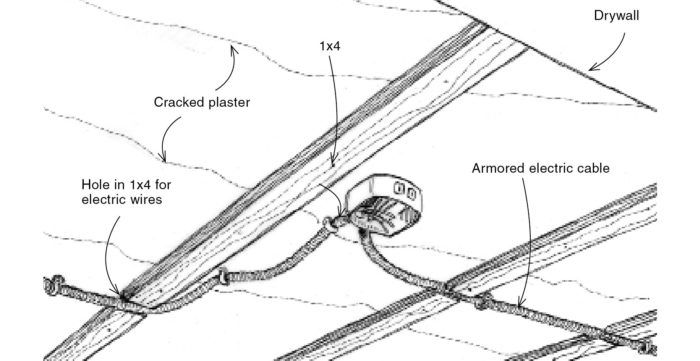
I often repair badly cracked plaster ceilings by covering them with a layer of 1⁄2-in. drywall. Fastening the drywall to 3⁄4-in.-thick furring strips enables wiring and ceiling boxes for light fixtures to be mounted beneath the plaster. In this situation, the wiring is close to the surface of the drywall, so I use conduit or armored cable, rather than Romex.
— Tom O’Brien, New Milford, Conn.
Edited and illustrated by Charles Miller
From Fine Homebuilding #269









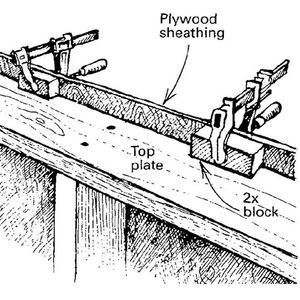




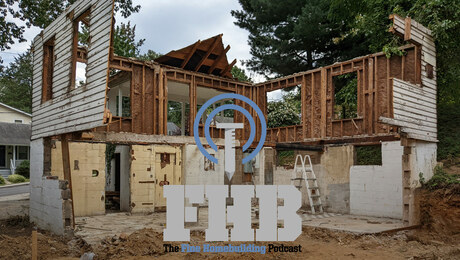
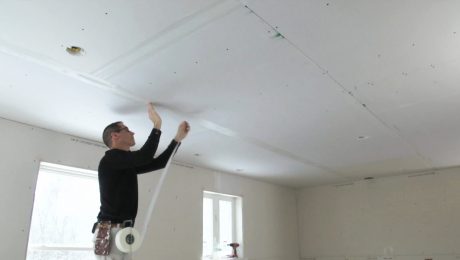
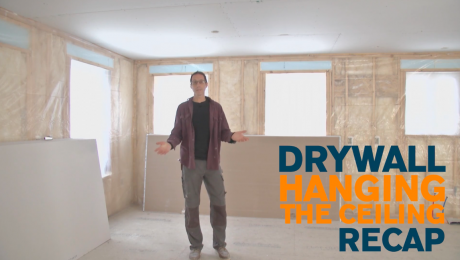
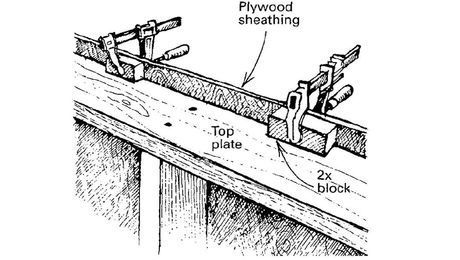

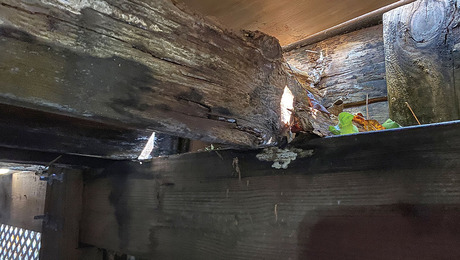










View Comments
THE USE OF ARMORED CABLE IS PROHIBITED IN SUCH A SITUATION. BETTER TO UTILIZE METAL PANCAKE BOXES AND POP THE CABLES UP ABOVE THE EXISTING PLASTER CEILING, ENTER THE BOXES THROUGH THE BACK KNOCK-OUTS PROVIDED. THIS WOULD FAIL ANY UL INSPECTION.
Quite a long and precise process you follow here. Knowing exactly what services for renovation you want, is very important. Custom decks and drywall are also used for renovating a house look like a magazine home. [smile].
Jacquelyn Thomas
http://alamconstructionnewyork.com/services/custom-decks/
Quite a long and precise process you follow here. Knowing exactly what services for renovation you want, is very important. Custom decks and drywall are also used for renovating a house look like a magazine home.
Jacquelyn Thomas
Hope your not getting that inspected or working on my house. Lol. Pop as many holes as I need and put Romeo above the plaster.
Sorry, but you should never bury wire of any kind.
Fire hazard.
Curious as to why people think this will fail inspection or is unsafe. It is common to use armored cable with 3/4" furring and drywall over CMU, this doesn't seem different. Anyone care to comment on this old tip?
I have no opinion on the wiring issue, but I do have a comment re air-sealing the old cracked plaster before installing the new drywall ceiling. This is one of the most common air leaks we find when weatherizing older homes. Folks install dropped ceilings to hide the cracks and holes in the old plaster ceilings. These air leakage sites can be a significant sources of air leakage, driven by stack effect and resulting in both high heating bills and comfort issues.
The fix is easy: Before installing the new drywall, seal the old ceiling as perfectly as you can. It doesn't need to be pretty -- expanding foam to fill holes and affix drywall or foam board patches to the cracked ceiling works well.